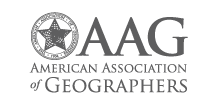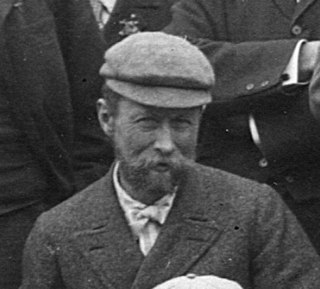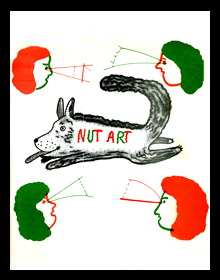Related Research Articles

A biome is a large collection of flora and fauna occupying a major habitat.

An ecoregion or ecozone is an ecologically and geographically defined area that is smaller than a bioregion, which in turn is smaller than a biogeographic realm. Ecoregions cover relatively large areas of land or water, and contain characteristic, geographically distinct assemblages of natural communities and species. The biodiversity of flora, fauna and ecosystems that characterise an ecoregion tends to be distinct from that of other ecoregions. In theory, biodiversity or conservation ecoregions are relatively large areas of land or water where the probability of encountering different species and communities at any given point remains relatively constant, within an acceptable range of variation.
Ecological classification or ecological typology is the classification of land or water into geographical units that represent variation in one or more ecological features. Traditional approaches focus on geology, topography, biogeography, soils, vegetation, climate conditions, living species, habitats, water resources, and sometimes also anthropic factors. Most approaches pursue the cartographical delineation or regionalisation of distinct areas for mapping and planning.

Valles Caldera is a 13.7-mile (22.0 km) wide volcanic caldera in the Jemez Mountains of northern New Mexico. Hot springs, streams, fumaroles, natural gas seeps and volcanic domes dot the caldera floor landscape. The highest point in the caldera is Redondo Peak, an 11,253-foot (3,430 m) resurgent lava dome located entirely within the caldera. Also within the caldera are several grass valleys, or valles, the largest of which is Valle Grande, the only one accessible by a paved road. Much of the caldera is within the Valles Caldera National Preserve, a unit of the National Park System. In 1975, Valles Caldera was designated as a National Natural Landmark by the National Park Service.

Mount Bailey is a relatively young tephra cone and shield volcano in the Cascade Range, located on the opposite side of Diamond Lake from Mount Thielsen in southern Oregon, United States. Bailey consists of a 2,000-foot (610 m)-high main cone on top of an old basaltic andesite shield volcano. With a volume of 8 to 9 km3, Mount Bailey is slightly smaller than neighboring Diamond Peak. Mount Bailey is a popular destination for recreational activities. Well known in the Pacific Northwest region as a haven for skiing in the winter months, the mountain's transportation, instead of a conventional chairlift, is provided by snowcats—treaded, tractor-like vehicles that can ascend Bailey's steep, snow-covered slopes and carry skiers to the higher reaches of the mountain. In the summer months, a 5-mile (8 km) hiking trail gives foot access to Bailey's summit. Mount Bailey is one of Oregon's Matterhorns.

Clinton Hart Merriam was an American zoologist, mammalogist, ornithologist, entomologist, ecologist, ethnographer, geographer, and naturalist. He was commonly known as the 'father of mammalogy', a branch of zoology referring to the study of mammals.

The quantitative revolution (QR)[n] was a paradigm shift that sought to develop a more rigorous and systematic methodology for the discipline of geography. It came as a response to the inadequacy of regional geography to explain general spatial dynamics. The main claim for the quantitative revolution is that it led to a shift from a descriptive (idiographic) geography to an empirical law-making (nomothetic) geography. The quantitative revolution occurred during the 1950s and 1960s and marked a rapid change in the method behind geographical research, from regional geography into a spatial science.

Henry Gannett was an American geographer who is described as the "father of mapmaking in America." He was the chief geographer for the United States Geological Survey essentially from its founding until 1902. He was also a founding member and president of the National Geographic Society.
Gilbert Fowler White was a prominent American geographer, sometimes termed the "father of floodplain management" and the "leading environmental geographer of the 20th century". White is known predominantly for his work on natural hazards, particularly flooding, and the importance of sound water management in contemporary society.

The American Association of Geographers (AAG) is a non-profit scientific and educational society aimed at advancing the understanding, study, and importance of geography and related fields. Its headquarters is located in Washington, D.C. The organization was founded on December 29, 1904, in Philadelphia, as the Association of American Geographers, with the American Society of Professional Geographers later amalgamating into it in December 1948 in Madison, Wisconsin. As of 2020, the association has more than 10,000 members, from nearly 100 countries. AAG members are geographers and related professionals who work in the public, private, and academic sectors.

Bailey Willis was a geological engineer who worked for the United States Geological Survey (USGS), and lectured at two prominent American universities. He also played a key role in getting Mount Rainier designated as a national park in 1899. After later focusing more on seismology, he became one of the world's leading earthquake experts of his time.

A biophysical environment is a biotic and abiotic surrounding of an organism or population, and consequently includes the factors that have an influence in their survival, development, and evolution. A biophysical environment can vary in scale from microscopic to global in extent. It can also be subdivided according to its attributes. Examples include the marine environment, the atmospheric environment and the terrestrial environment. The number of biophysical environments is countless, given that each living organism has its own environment.
Robert Bailey may refer to:
The Canadian Association of Geographers is an educational and scientific society in Canada aimed at advancing the understanding of, study of, and importance of geography and related fields. CAG publishes the quarterly peer-reviewed journal The Canadian Geographer.
The New York State College of Forestry at Cornell was a statutory college established in 1898 at Cornell University to teach scientific forestry. The first four-year college of forestry in the country, it was defunded by the State of New York in 1903, over controversies involving the college's forestry practices in the Adirondacks. Forestry studies continued at Cornell even after the college's closing.

The National Council for Geographic Education (NCGE), chartered in 1915, is a non-profit scientific and educational society in the United States that promotes and supports geography education.

Clayton George Bailey, was an American artist who worked primarily in the mediums of ceramic and metal sculpture.

Nut artmovement was an artistic consciousness movement centered in Northern California, that flourished primarily in the late-1960s and early-1970s.

Betty Graveen Bailey was an American multidisciplinary artist. She lived and worked in Contra Costa County, California, and was part of the Nut art movement.
Paige Fischer is an environmental scientist from the Pacific Northwest whose research focuses mainly on the human dimensions of environmental changes. She is especially interested in forest ecology and conservation. She is currently an assistant professor at the University of Michigan's School for Environment and Sustainability, teaching upper level classes about analysis methods and social vulnerability to climate change.
References
- ↑ Davis, Norah Deakin (May–June 1994). "Following the mapmaker - US Forest Service chief geographer Robert G. Bailey". American Forests. Retrieved 31 March 2009.
- ↑ International Scientific Symposium 2012 speaker bios Archived 2013-01-15 at archive.today